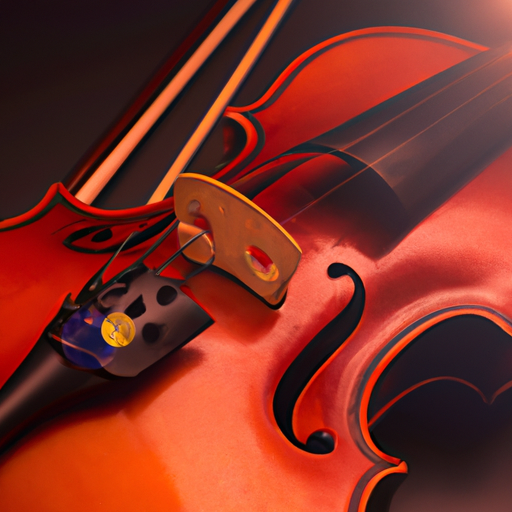
Playing the violin is a beautiful and rewarding experience, but it can be challenging for beginners. This guide is designed to help you understand the basics of playing the violin and give you the tools you need to start your journey.

Before you start playing the violin, you need to choose the right instrument for you. There are various types of violins available, from student models to professional ones. It's important to select the perfect violin for you that fits your needs, budget and playing style.

To learn more about the different types of violins and how to choose the right one for you, check out this guide.
Understanding the different parts of the violin is essential to playing it properly. From the bridge to the tailpiece, each part works together to create sound. Learning about each part and its function is crucial to becoming a skilled violinist.
Proper placement of the violin on the shoulder and correct left and right hand positioning are crucial to producing a clear and consistent sound. Mastering the right technique for holding and positioning the violin will help you play with ease and precision.
Holding the bow correctly and producing a clear and consistent sound are some of the basic techniques you need to learn to play the violin. Practicing these techniques regularly will help you develop your skills and build a strong foundation for playing more complex pieces.
The basics of sheet music notation and tips for reading music and playing along are essential for any beginner violinist. Understanding how to read sheet music will help you learn new pieces and play them accurately.
Consistent practice is crucial for improving your playing skills. Techniques for improving your playing like practicing scales and arpeggios, and developing a consistent practice routine will help you become a better violinist.
Common mistakes and how to avoid them, and overcoming finger and bowing difficulties are some of the challenges that beginners face. Learning how to overcome these challenges will help you develop your skills and become a more confident player.
Joining a violin ensemble and playing with others is a great way to develop your skills and improve as a musician. Tips for playing with others like listening and following are essential to playing in a group setting.
In conclusion, this beginner's guide has covered the basics of playing the violin. Remember to choose the right violin, understand the different parts of the violin, hold and position it properly, learn basic techniques, read sheet music, practice consistently, overcome common challenges, and play in a group setting. With hard work, dedication, and practice, anyone can learn to play the violin.